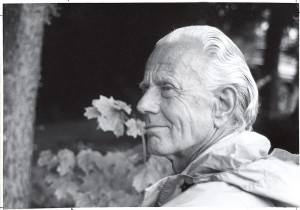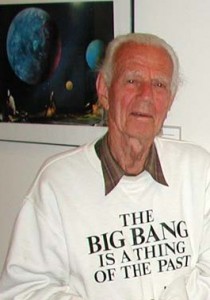I just heard the news that John Dobson, among many other things, the inventor of the Dobsonian telescope, passed away yesterday, January 15th 2014, at the age of 98. I had the pleasure of two instances of significance with Mr. Dobson over the years. The first, exposure to The Astronomer's book and video series from the early 90's which he had a clip in. This clip was one of my very first exposures to astronomy (much thanks to Jim Lewis for sharing this back then) and certainly helped inspire my drive and desire to pursue astronomy and make it a part of my life in some manner (mainly toward a degree in the field).
 The second, was an opportunity to actually meet him at an ASKC (Astronomical Society of Kansas City) event where he gave a presentation. His presentation was good and I'm sure inspired and encouraged people in the room which he excelled at doing throughout his life. It was a pleasure to know of and understand his contribution to the astronomical community and to have actually had the chance to meet him.
The second, was an opportunity to actually meet him at an ASKC (Astronomical Society of Kansas City) event where he gave a presentation. His presentation was good and I'm sure inspired and encouraged people in the room which he excelled at doing throughout his life. It was a pleasure to know of and understand his contribution to the astronomical community and to have actually had the chance to meet him.
He leaves behind significant contributions to the community that are, pun and more intended,… astronomical in their impact. The invention of the Dobsonian telescope is a monolithic contribution from the stand point that, for the first time, it placed small and especially large aperture telescopes into a price range that even casual hobbyists could afford. Even today, a 16" dobsonian style telescope (this is huge) runs roughly $2,000 while other 16" aperture telescopes will typically run from $10,000 to $20,000 as a starting price.
The second and, in my opinion, even more important contribution was his personal one. The amount of public outreach and interaction that John Dobson had over the years of his involvement, and founding, of the San Fransisco Sidewalk Astronomers is staggering to consider. The shear number of people that he encouraged to look through his telescopes and share enjoyment of the universe around us is simply astounding. As the AAL (Astronomy Associates of Lawrence) so aptly puts it "Astronomy IS the people's science" and John Dobson was a true master at bringing basic, awe inspiring, astronomy to the people.
John, after the run that you've had with life, and all the positive contributions you managed to make, I'd say you certainly deserve the break. You'll definitely be missed for those contributions and your willingness to engage and share the spectacle with people, it's with great thanks and joy that I can say I had the opportunity to meet you.
RIP John Dobson (1915-2014)
Links to Additional Articles
http://earthsky.org/space/r-i-p-john-dobson
http://www.skyandtelescope.com/news/John-Dobson-1915ndash2014-240456881.html


